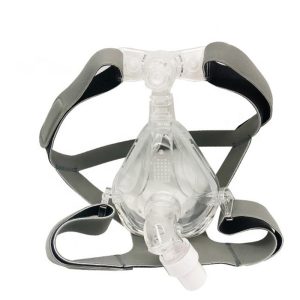Continuous Positive Airway Pressure (CPAP) therapy is a common treatment for obstructive sleep apnea, but many users struggle with comfort issues. Here are comprehensive strategies to make your CPAP experience more comfortable:
- Choose the Right Mask
Selecting the correct mask type and size is crucial. There are several types of masks available:
– Nasal masks cover the nose and are often preferred for their smaller size.
– Nasal pillow masks rest at the entrance of the nostrils, which can be less obtrusive.
– Full-face masks cover both the nose and mouth, useful for those who breathe through their mouth during sleep.
Proper sizing is essential to prevent leaks and discomfort. Many manufacturers offer sizing guides to help find the perfect fit.
- Proper Mask Fitting
Ensure your mask is properly fitted:
– Adjust the straps so the mask fits snugly but not too tight. Over-tightening can cause pressure sores and discomfort.
– Check for leaks by adjusting the mask while the CPAP machine is on. Small adjustments in the position of the mask can often stop leaks without needing to tighten it too much.
- Use Mask Liners and Pads
Mask liners can reduce skin irritation and pressure marks. These liners are often made of soft materials that add a barrier between your skin and the mask. Nasal gel pads can also be used to cushion the area around the nose and prevent soreness.
- Gradual Acclimatization
If you are new to CPAP therapy, it can help to gradually acclimate to the mask:
– Wear the mask while awake to get used to the feel of it on your face.
– Practice breathing with the mask during daytime activities like reading or watching TV.
– Start with shorter periods and gradually increase the time you wear the mask.
- Humidification
Dry air can cause nasal congestion and throat irritation. Using a CPAP machine with a built-in humidifier can add moisture to the air, making it more comfortable to breathe. Some CPAP machines allow you to adjust the level of humidification to find what works best for you.
- Regular Cleaning and Maintenance
Keeping your CPAP equipment clean is essential for both comfort and hygiene:
– Wash your mask, tubing, and humidifier chamber regularly to prevent the buildup of bacteria and mold.
– Replace filters as recommended by the manufacturer to ensure clean air.
- Optimal Sleeping Position
Your sleeping position can affect how well your CPAP mask fits and functions:
– Back sleeping is often recommended as it allows for the best airflow and mask seal.
– Side sleeping can be comfortable if you use a CPAP-friendly pillow designed to accommodate the mask and tubing.
- Dealing with ClaustrophobiaMany people feel claustrophobic when using a CPAP mask. To combat this:
– Practice wearing the mask for short periods while awake.
– Focus on relaxation techniques such as deep breathing or mindfulness to ease anxiety.
- Seek Professional Help
If you continue to experience discomfort, consult your healthcare provider or a CPAP specialist. They can offer advice tailored to your specific issues and may suggest different mask types, adjustments, or even different CPAP settings.
- Utilize CPAP Accessories
There are various accessories designed to improve the comfort of CPAP therapy:
– CPAP pillows can help maintain the mask seal and prevent pressure points.
– Hose management systems keep the hose out of the way, reducing the risk of dislodging the mask during sleep.



